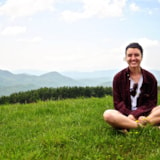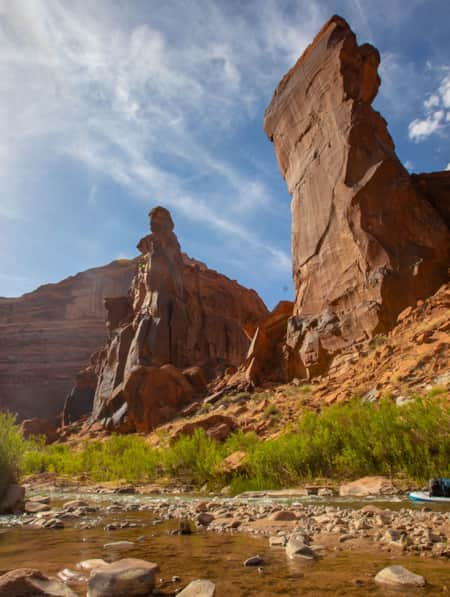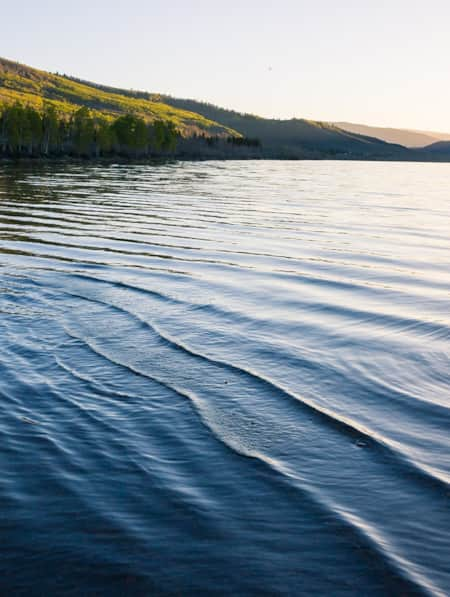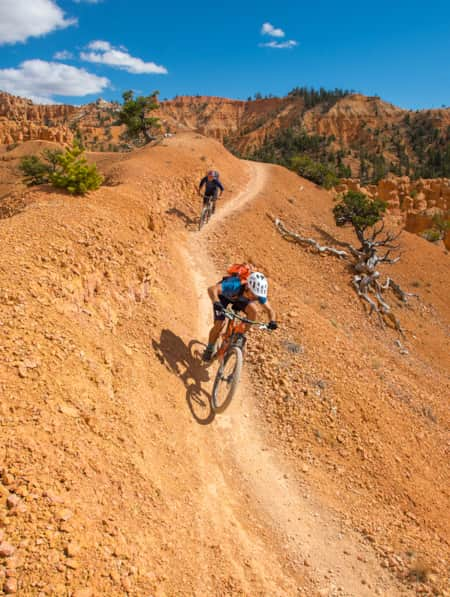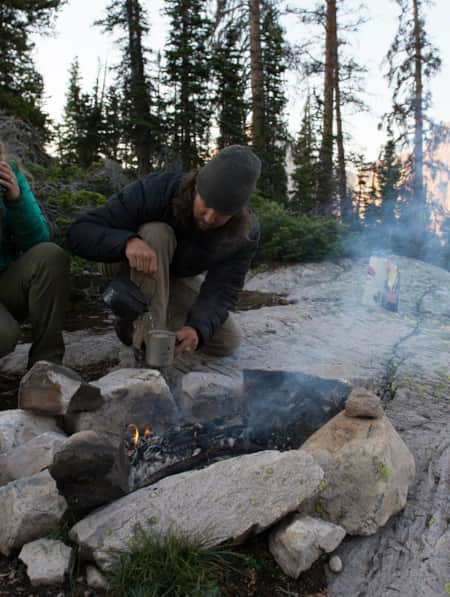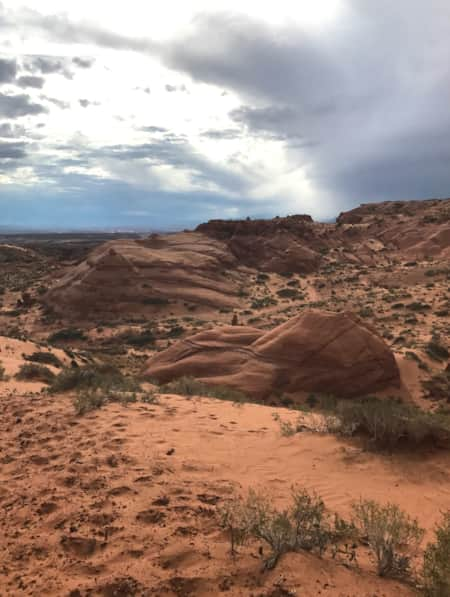How to Camp on Utah’s BLM Lands
Some insights and tips learned prior-to and during a novice’s first-ever camping trip on BLM lands.
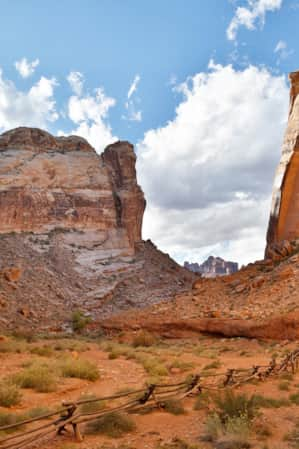
As an aficionado of the great outdoors and a previous long-time, resident of the eastern United States, I’ve always heard murmurs of the joys of recreating on public lands, especially in THE WEST. I recently relocated to Utah, where miles of BLM-managed (definition to follow) public lands sprawl across the landscape, and sure enough, these murmurs quickly became resounding truths; recreating on these lands was not only now attainable, but something I had to try. As I began asking questions and dabbling in research, I discovered how daunting camping, biking, hiking, etc. on public lands can be, especially starting from square one.
Now, as I’ve researched, experienced and grown in my confidence of camping in Utah’s expanse, here are a few things I’ve learned along the way.
Definitions — Yeah, Definitions.
If you’re new to the public land scene like I was, there are a few words you haven’t heard of before or need some clarification on.
Here’s some important terminology to know:
- Public lands - Land that is open to the public’s use (you and me) and managed by the government (federal, state or city). Land use is shared between public (recreation) and leased (timber, mining, ranching, etc.) use. Yes, this land includes national parks, BUT also includes state and city parks, national forests, historic sites, conservation areas, monuments and more.
- Bureau of Land Management (BLM) - BLM is a bureau (a branch so to speak) of the U.S. Department of the Interior. With multiple offices across the U.S., BLM has a huge job in managing public lands for multiple-uses like recreation and natural resource development. It’s important to note that BLM manages lands for everyone but the lands are owned by the American people. To give you perspective, BLM oversees 10 percent (or one in 10 acres) of the landmass of the nation. In Utah, BLM manages nearly 22.9 million acres of public lands — that’s about 42 percent of the state. Read more about its mission.
- BLM land - Public land managed by the BLM under its multiple use mission. Some uses include conservation, recreation, energy development, education, fishing and the protection of natural, cultural and historical resources.
- BLM campgrounds vs. dispersed (primitive) camping-
- Campgrounds refers to BLM’s more developed camping facilities, which may provide amenities such as bathrooms, potable water, electrical hookups (fancy), etc. Campgrounds are great for beginners. Some require a small fee and a reservation.
- Dispersed (or primitive camping) can take place on most public lands, including BLM lands, as long as it does not conflict with other authorized uses or in areas posted "closed to camping," or in some way adversely affects wildlife species or natural resources. This type of camping is backcountry and remote, but great for car or tent camping. Provides limited to no amenities. Knowledge and research is KEY.
Finding BLM Land
From maps and brochures, to travel blogs and human interaction, I can confidently say we live in an age of excess resources — when finding your piece of BLM land to recreate/camp on, utilize the excess!
Use a map - Maps (physical and digital) are pivotal. Utah BLM has an interactive web map (it's also downloadable) that will bless your planning process. A physical map is also a good thing to have on hand, considering your high chance of having limited to no phone service. Stop by a BLM office for updated maps (may require purchase) or print one from online. Also, many updated maps found in BLM offices offer a QR code that when scanned, open a georeferenced mapping application (like the Avenza app). Additional downloadable, offline maps can be found using Google and the Maps.Me app.
Call or visit an office - I recommend calling the land managers (the closest BLM office or information center) directly in addition to your maps and online research. Chatting with someone in the industry can provide a wealth of insight such as tips, closings, new-developments, expectations, weather and more. And, if possible and/or close-by, make time to visit an office or center on your way to your campsite. They have a great collection of maps and brochures, and sometimes, it’s just more fruitful to chat with a person face-to-face.
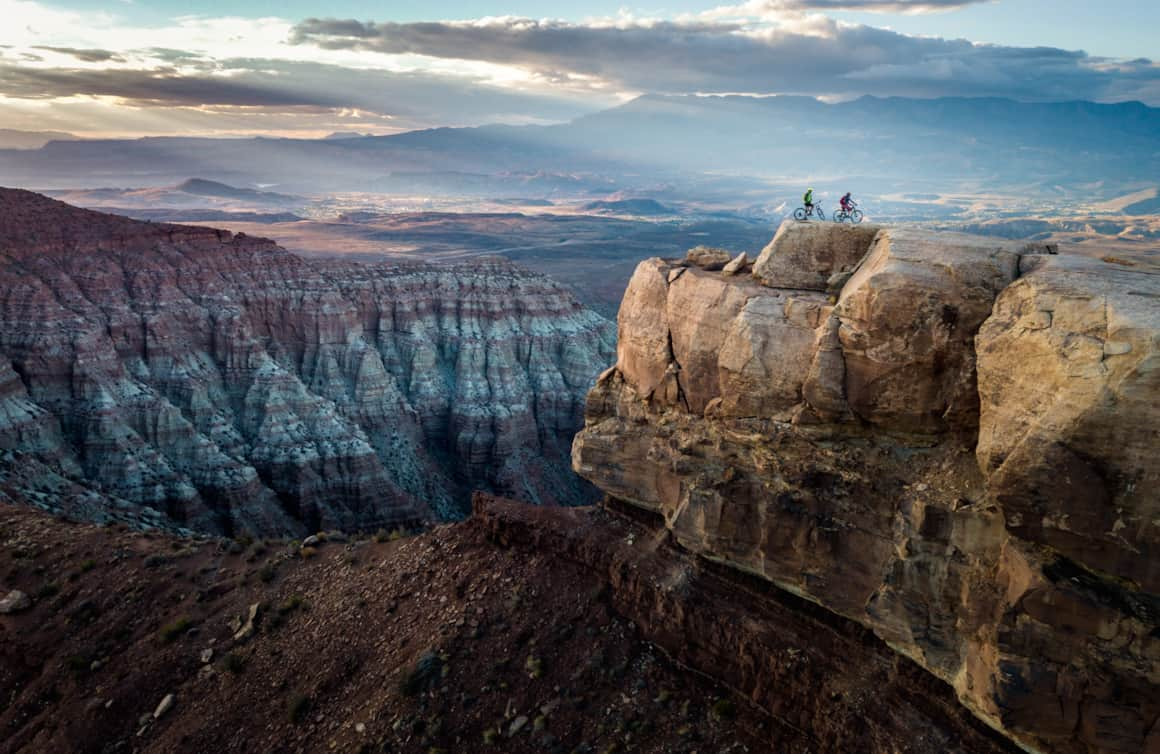
Gooseberry Mesa in Southern Utah’s red rock country.
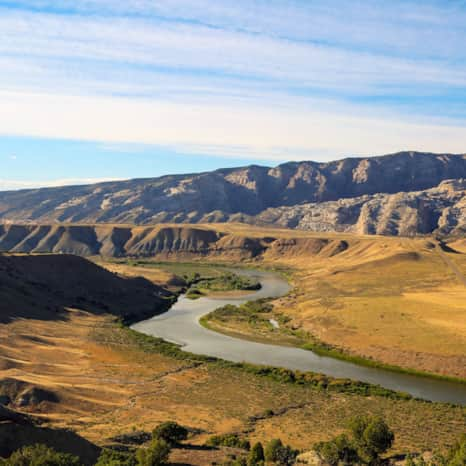
Split Mountain in Vernal.
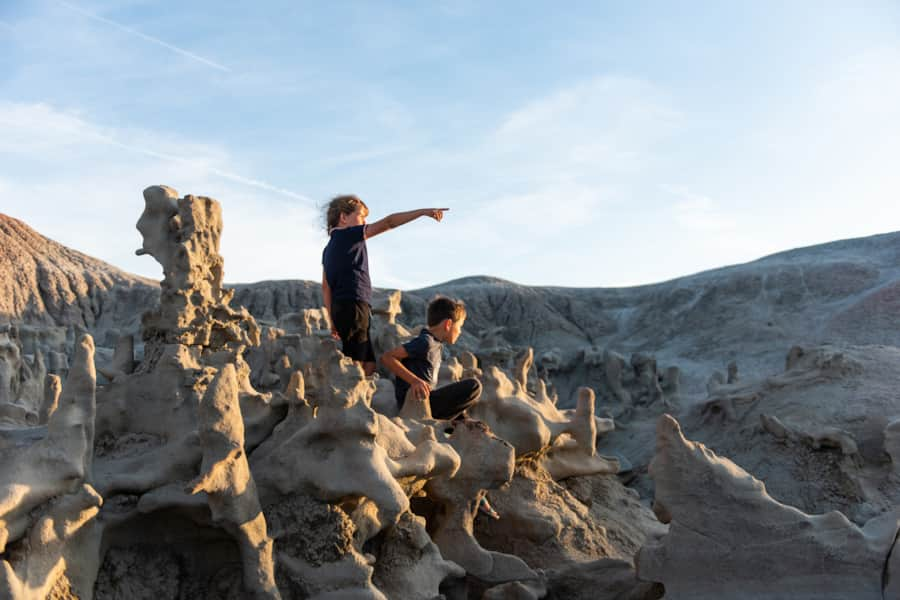
Fantasy Canyon, located in the northeastern part of the state.
It’s More than OK to Follow the Rules
For BLM, every field office has similar and different rules and it’s a necessity for you and the longevity of our public lands to familiarize yourself with them before you camp. For example, on lands managed by the BLM’s Vernal Field Office, you can drive 300 feet off of a main road for dispersed camping. Managed lands in other areas have different rules.
Here’s a few rules/best practices that are universal and should be applied in addition to each field office’s individual rules.
Practice Leave No Trace and Tread Lightly! - Wildlife is more present and ecosystems are often more delicate in the backcountry, so it’s particularly important to practice Leave No Trace and Tread Lightly! principles. These principles include planning ahead, packing out your trash, being careful with fire, traveling or camping on durable surfaces, respecting cultural sites, wildlife, and other visitors and more.
Bathrooms - Some areas may have toilets nearby, if not, it’s not okay to just pop a squat anywhere. There are repercussions to our waste. Watch this video to be prepared for when nature calls. And now that you’re super-duper excited for your next outdoor pooper-tunity, here are some additional bathroom tips.
Campfires - If you need a fire, keep in mind the local fire restrictions for the area (these can change daily!). The best resource for updated information are the local field offices; call or visit their websites. In many popular primitive camping areas, you can find pre-existing fire rings made by previous travelers — use them! Keep your fire small and under control. Never leave a fire unattended and make sure it’s completely out before you hit the hay. If you just need a fire for cooking, consider using a camp stove instead. Read more tips for building and managing a fire safely.
What to Pack
Even though you might have the urge to quickly hop in the car and escape to your campsite, pause and make sure you have the essentials.
- Tent, sleeping pad, pillow, blankets and/or sleeping bag(s)
- Food, water and personal items (prescriptions, toiletries, sun screen)
- If you plan on collecting water from a stream or lake, be prepared to treat it. If you’re at a campground, they may have potable water, but before you plan on it, call ahead/research
- Headlamp, flashlight and batteries
- Clothing for changing weather conditions (layers are great!)
- First aid kit
- Paper maps and/or downloaded maps
- Fire-starting materials (if you plan on starting a fire)
- Portable camp stove (for boiling water/cooking)
- Air compressor and aerosol tire sealant (mostly if you plan on driving off-road or on dirt roads)
For more packing suggestions, read Planning Ahead For Your Utah Adventure.
Additional Tips
Recreate - In addition to camping, BLM lands and other public lands also lend themselves to countless recreational opportunities. Though you’re camping at night, fill your days with biking, hiking, fishing, kayaking, star gazing, OHV riding and so on. Read more about BLM recreation in Utah.
Fees and permits - The BLM occasionally requires permits and recreation fees for certain special areas and activities; what’s neat is that they retain and spend 100 percent of collected recreation fees for maintenance, improvements and visitor services in the area where they are collected. Research ahead of time to see whether or not permits or fees are required.
Tell a friend - If you are headed out to camp alone, tell a friend or family member the specific or general area you are traveling to and when you plan to return (Read: How To Stay Safe in the Outdoors). It pays to be cautious! (Learn more about how you can support Utah’s local search and rescue teams with a Utah Search and Rescue Assistance card.)
From definitions and clarifications to tips and best practices, camping on BLM and public lands is worth gaining the confidence to go, do, see, preserve and enJOY.

A First-ever Camping Trip on BLM Lands
As a new resident of the western United States, I’ve discovered the gift of recreating on public lands. Though daunting at first, after researching and waiting too long, the time finally felt right to try camping on BLM lands in Utah’s dinosaur country. There is no shame in trying something new.
